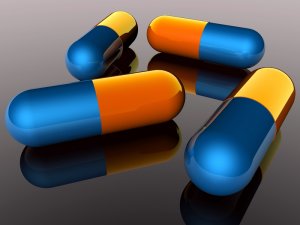An Overview of the treatment of tick-borne diseases
Based on frequent questions from both laymen and experts, we have prepared a brief overview of recommended antibiotic treatment plans for individual tick-borne diseases.
Fortunately, in the early stages of infection borrelia are sensitive to common antibiotics. Basal doses of amoxycillin / clavulanate (Augmentin, Amoxyclav, Unasyn), doxycycline (Doxybene, Doxyhexal) or azithromycin (Sumamed, Azithromycin Mylan) administred within approximately 10 days after an infected tick bite prevents the development of the disease. Beware of the use of amoxicillin (Duomox, Ospamox) alone - the incidence of resistant borrelia strains is very common.

This is a viral disease, where the use of antibiotics is ineffective. Effective antivirals do not yet exist.
The causative agent of this disease is only sensitive to doxycycline (Doxybene, Doxyhexal). Other common antibiotics are ineffective. This complicates effective treatment during pregnancy when doxycycline is contraindicated. Doxycycline can only be used in exceptional cases where the risk of harm to the fetus is offset by a very serious course of the disease. An alternative for pregnant women is azithromycin (Sumamed, Azithromycin Mylan), which is safe to use during pregnancy.
Healthy people without a defficient immune system can easily fend off the disease without the use of antibiotics. Complications may occur in people taking immunosuppressants (e.g. after transplantation), after removal of the spleen, in the elderly, in blood donors and in people with congenital immunodeficiency. In these cases, the disease is usually treated after hospitalization with a combination of clindamycin and quinine or atovaquone and azithromycin.
This disease is easily treatable with the basal dose of doxycycline (Doxybene, Doxyhexal) or alternatively azithromycin (Sumamed, Azithromycin Mylan).
For minor cases of this rare disease doxycycline (Doxybene, Doxyhexal) is used. More serious cases requiring hospitalization are treated by application of streptomycin or gentamicin injections.
The recomended treatment is doxycycline (100mg twice daily), in case of doxycycline intolerance than rifampicin (300mg twice daily). The disappearance of symptoms occurs within 5 days. However, optimal treatment duration is not yet known, 3-6 weeks of treatment is recommended.
The use of all mentioned preparations is based on the latest clinical data and regulations, and is by no means a recommendation for the treatment of specific individuals. For a decision on an adequate treatment plan, the attending physician will assess the patient's medical condition, history, and allergies to individual preparations.